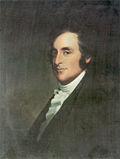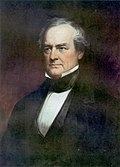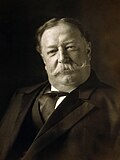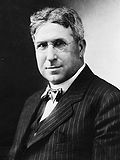| United States Secretary of War | |
|---|---|
 | |
 Flag of the secretary | |
| United States Department of War | |
| Style | Mr. Secretary |
| Type | Secretary |
| Status | Abolished |
| Member of | Cabinet |
| Reports to | President of the United States |
| Seat | Washington, D.C. |
| Appointer | The president with Senate advice and consent |
| Term length | No fixed term |
| Precursor | Secretary at War |
| Formation | September 12, 1789 |
| First holder | Henry Knox |
| Final holder | Kenneth C. Royall |
| Abolished | September 18, 1947 |
| Superseded by | Secretary of Defense Secretary of the Army Secretary of the Air Force |
| Succession | 6th in the line of succession |
The secretary of war was a member of the U.S. Cabinet, beginning with George Washington's administration. A similar position, called either "Secretary at War" or "Secretary of War", had been appointed to serve the Congress of the Confederation under the Articles of Confederation between 1781 and 1789. Benjamin Lincoln and later Henry Knox held the position. When Washington was inaugurated as the first president under the Constitution, he appointed Knox to continue serving as secretary of war.
Contents
- List of secretaries
- Secretary at War (1781–1789)
- Secretary of War (1789–1947)
- See also
- References
- Footnotes
- Further reading
The secretary of war was the head of the War Department. At first, he was responsible for the United States Army and the Navy. In 1798, the secretary of the Navy was created by statute, and the scope of responsibility for the War Department was reduced to the Army. From 1886 onward, the secretary of war was in the line of succession to the presidency, after the vice president of the United States, the speaker of the House of Representatives, the president pro tempore of the Senate and the secretary of state.
In 1947, with the passing of the National Security Act of 1947, the secretary of war was replaced by the secretary of the Army and the secretary of the Air Force and a new secretary, the secretary of defense, was created for coordination of the services. Since 1949, the service secretaries, Army, Air Force, and Navy, have been non-Cabinet subordinates under the secretary of defense. The secretary of the Army's office is generally considered the direct successor to the secretary of war's office, with the new secretary of defense taking the secretaries of war and navy positions in the Cabinet, and the line of succession to the presidency.




























































